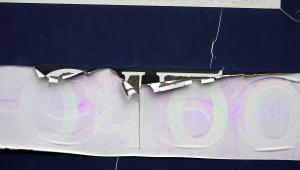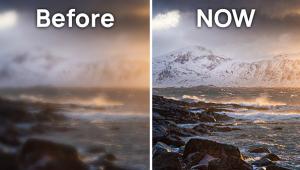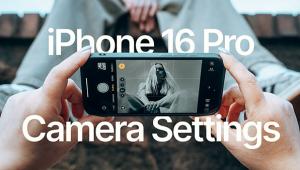Digital Help
Q&A For Digital Photography
Digital Help is designed to aid you in getting the most from your digital photography, printing, scanning, and image creation. Each month, David Brooks provides solutions to problems you might encounter with matters such as color calibration and management, digital printer and scanner settings, and working with digital photographic images with many different kinds of cameras and software. All questions sent to him will be answered with the most appropriate information he can access and provide. However, not all questions and answers will appear in this department. Readers can send questions to David Brooks addressed to Shutterbug magazine, through the Shutterbug website (www.shutterbug.com), directly via e-mail to: editorial@shutterbug.com or fotografx@mindspring.com or by US Mail to: David Brooks, PO Box 2830, Lompoc, CA 93438.
Digital Studio Stills Shot To Easily Replace The Background
Q. We have been using conventional photography for the past eight years but
we recently started using digital cameras. Unfortunately, we found that when
we wanted to replace the conventional muslin backgrounds and move to Chroma
Key there was no information available for Chroma Key software. All we found
was Chroma Key editors for video, but not specific for the use of (still) photography.
We would appreciate any help you can offer us.
Chris Loya
Monrovia, CA
A. Unlike digital video, the "Chroma Key" function
is built into still digital image-editing software like Photoshop. In other
words, no special software other than a pro-level image editor is required.
Simply shoot your subject on a single color, evenly lit background--usually,
a blue-green (aqua) works best. Then with the file open in Photoshop go to the
menu bar, Select menu and click on Color Range. Then use the window dialog that
opens to select Sampled Colors, and use the eyedropper to capture the background
color from the open image, make any adjustment in what is included and excluded
in the selection with the Fuzziness slider, and click OK. This provides a selection
of just the background into which you can paste any copied digital image, appropriately
sized to fit.
Blurred Digital Camera Photos
Q. My husband and I have been taking photos with our Sony 5.1-megapixel camera
for several years now. Lately we have noticed that several of our photos once
downloaded on the computer come out fuzzy or blurry. How can we minimize this
with our camera so we can take great shots both at night and during the day?
Marlene L. Mendiola
A. There is a possibility that your camera's autofocus
function is not working properly that could cause "soft" picture
quality. But that would be a rather rare kind of failure.
If you hand hold the camera and use the rear LCD screen to aim, frame, and view
the picture, it is more likely that the unsteadiness of this technique, and
possibly jerking the camera a bit when you depress the shutter release, is causing
enough camera movement to blur the pictures.
Many of the newest models of point-and-shoot digital cameras now have an "Anti-Shake"
feature that corrects for the unsteadiness of taking pictures with the camera
held out close to arm's length. In other words, the way a camera must
be held to use the LCD screen on back as the viewer to aim and take pictures
promotes unsteadiness and blurred pictures. Manufacturers have recognized this
as a problem and have used technology to provide a solution.
Printer Profiles Make A Difference To Color Quality, But Not B&W
Q. When I owned the Epson 2200 I was extremely happy with the ColorByte drivers,
especially for black and white. When I upgraded to the R2400 I assumed that
ColorByte would be there for me. For the past six months ColorByte has promised
me a new driver for the R2400 "by the end of the week" and it has
yet to happen. They do support the 4800 but I'm not sure I want the additional
expense and do I really need a larger printer? (I don't.)
I was reading in your report of the R2400 (December 2005 issue of Shutterbug)
that you did your own profiles. What software did you use? Do you feel that
your results rival what ColorByte has to offer, especially with respect to black
and white?
Judy Grose
A. Previous to the Epson R2400, no Epson printer was made
to actually support anything but color printing. To print black and white all
kinds of workarounds were devised to make a color printer reproduce black and
white, and RIPs like ColorByte were one such workaround.
With the release of the R2400, and all K3 Epson printers, Epson has provided
a means to print black and white gray scale files that is effective, including
the ability to control the hues and tints of the printed image. Although the
control in the Epson driver leaves much to be desired, it is really as effective
a result as can be obtained. So the workarounds, particularly RIPs like ColorByte,
don't really have all that much to offer in terms of results that will
improve black and white print performance of a R2400. Color management and profiles
don't really control and function when applied to black and white and
printing a gray scale file. It applies only to RGB/CMYK images and files.
However, when printing a color image in color with the R2400, or any color printer,
the color accuracy and image quality can be improved and made more predictable
by using custom printer/paper profiles. I have been able to improve print performance
in color even over the Epson canned profiles supplied with their printer using
their own papers. But, of course, the greatest advantage of using custom profiles
is to obtain optimum results in color with third-party media. The hardware and
software I use now is a new and improved, and less costly, product from ColorVision
called PrintFIX PRO. (I had previously used the ColorVision Spectro relative
to the referral in my R2400 report.) I had the opportunity and privilege to
be a beta tester for this product, which was released a short time ago. My report
on the ColorVision PrintFIX PRO appeared in the August 2006 issue of Shutterbug.
For more information about PrintFIX PRO, visit the ColorVision website at: www.colorvision.com.
- Log in or register to post comments


































